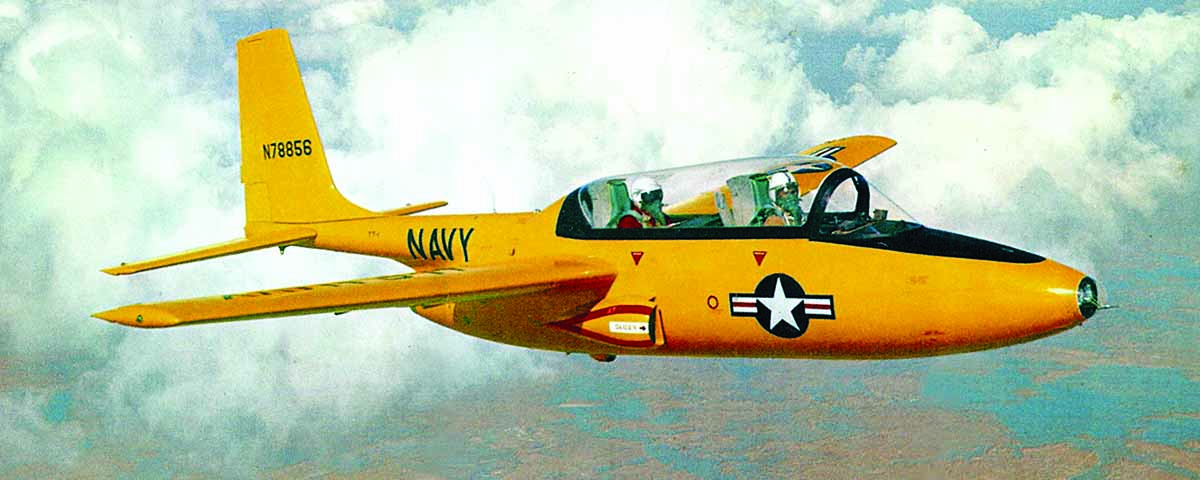Temco TT-1 Pinto
The Temco Model 51 Pinto originated from an attempt by the Texas Engineering and Manufacturing Company to satisfy a 1952 U.S. Air Force request for a jet-powered primary trainer that would eliminate piston-engine aircraft from its pilot training program. The Model 51 was an economical tandem two-seater powered by a Continental Motors YJ69-T-9 turbojet—a license-built version of the French Turbomeca Marboré—producing 920 pounds of thrust. Built in 1955 and first flying on March 26, 1956, the Pinto featured advanced features such as ejection seats, liquid-oxygen equipment and speed brakes, but that contributed to excessive weight for what the USAF judged a somewhat underpowered airplane. In consequence, it ultimately passed over the Pinto for the Cessna T-37, whose two J69 engines offered better performance.
That would have been the end of the story but for the Navy entertaining the notion of an all-jet training program and expressing its own interest in Temco’s offering. The firm ordered 14 more preproduction examples, the last of which was completed in 1957, and stationed them at Naval Air Training Center in Patuxent, Md., where they operated alongside Beech Model 73 Jet Mentors, which were also being considered for the Navy requirement. Given the naval designation TT-1—and often referred to by its pilots as the Tinker Toy—the Pinto had a maximum speed of 345 mph and a cruising speed of 247 mph. It was praised for good flight characteristics, but its “wave off” capacity during carrier landings was judged marginal. Its Achilles heel, however, turned out to be its endurance, a mere 1½ hours.
In 1959 the TT-1s were transferred to Air Training Command in Pensacola, Fla., where they were phased out of service and sold as surplus by 1960. The Navy rejected the Jet Mentor as well, reverting to the Beech T-34B Mentor while phasing in the T-34C Turbo Mentor. During its time at Patuxent, however, the TT-1 made a modest bit of history in March 1959 when Aviation Cadet E.R. Clark became the first naval airman to solo in a jet without any previous flight experience in piston-engine trainers.
In the succeeding years, the underpowered, short-ranged but easy-to-fly Pintos found their way into private hands. In 1968 American Jet Industries (later Gulfstream Aerospace) installed a General Electric CJ610-6 turbojet producing 2,850 pounds of thrust in a Pinto airframe to produce the T-610 Superpinto, which first flew on June 28. It was intended for the Philippine air force, but nothing came of it, save for a prototype still exhibited in Manila’s Philippine Air Force Museum. As of December 2016, five TT-1s or T-610s were still on the civil roster, although the certificate on one had expired.

